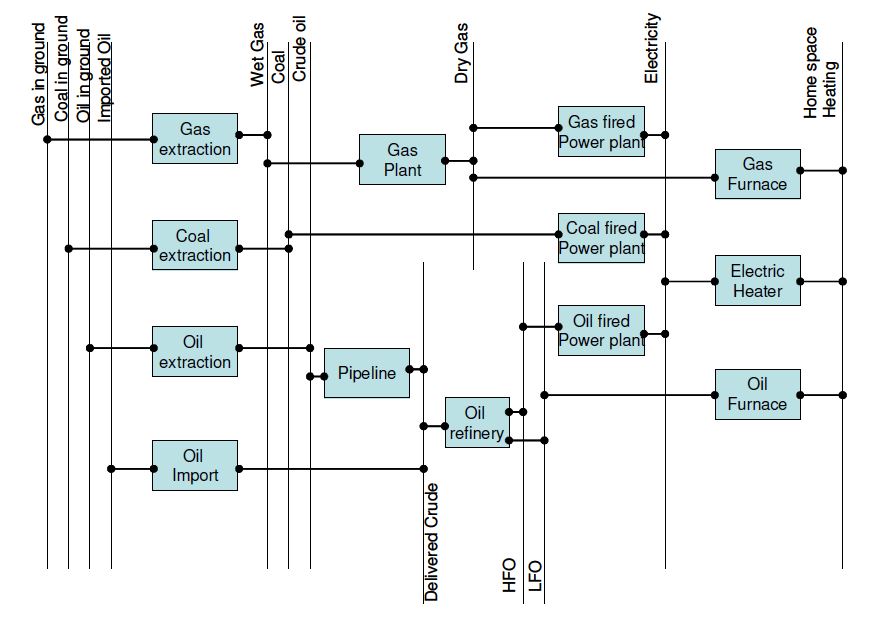FACETS is built within the MARKAL/TIMES model generator framework - in use by more than 300 groups in 70 countries over the past 35 years - which is designed to conduct fully integrated analysis across all sectors of the energy system. A MARKAL/TIMES model represents the energy system as a Reference Energy System (RES) network that describes all existing or potential energy resources and technologies, as well as the demands for useful energy services - such as lighting, process heat, and passenger transport - that will drive the model's solution.
Nodes in the network are energy resources or technologies, while the connecting links are fuels (or other commodities such as emissions, energy services, materials, or water). Constraints enforce conservation of energy across all links in the network. The model works right-to-left to calculate the most cost effective pathway to satisfy all the end use demands using the available resources and technologies, subject to any constraints or policies the user imposes. This network structure enables FACETS to be fully transparent, flexible, and easy to explain, while powerfully analyzing technology, resource, and infrastructure changes.
A multisector, well-to-wheels approach is essential to contemporary policy analysis needs, which cut across all sectors of the energy economy and integrate supply and demand side measures. Increasingly, energy efficiency policies are being considered alongside traditional emissions control approaches and renewable energy standards to meet air quality goals. CAFE vehicle efficiency standards and renewable fuel standards are being used to meet energy security goals. And serious attempts to reduce greenhouse gas emissions will require measures in all sectors.
Analysis methods that consider only one measure at a time - such as those used in simple inventory models, or to construct marginal abatement cost curves - will double count benefits from some measures and miss important synergies between others. FACETS captures all demand-supply interactions, and it can analyze technologies that may transform multiple sectors simultaneously. For example, widespread electrification of vehicles will reshape electricity loads, and possibly introduce distributed electricity storage, significantly impacting the challenge of integrating renewable electricity onto the grid. FACETS is designed to analyze these transformative strategies, while integrating dozens of efficiency, resource, and technology measures across the energy economy.
